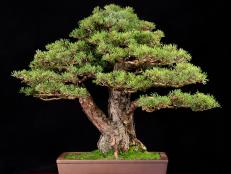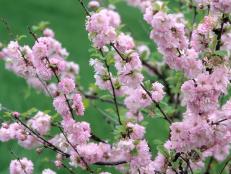Bonsai Tree Turning Brown?
Growing bonsai isn't just an art — it's also a science. Learn more about how to grow a healthy bonsai tree, and what might be wrong if yours is looking a bit sickly.


Eastern Leaf/www.easternleaf.com
Jason Chan, bonsai artist, educator and owner of Eastern Leaf online plant retailer, says the idea that bonsai are hard to grow is a misconception. "It's really easy once you learn how the tree grows and how to control and shape it. Working with bonsai is a very peaceful experience."
The art of bonsai – growing miniature trees in small containers to resemble their full-grown counterparts – has fascinated people for centuries. There are bonsai specimens that are known to be hundreds of years old. You can bet they’ve been given the best care and attention possible.
When a once-healthy bonsai goes off track – browning leaves, branch dieback and so forth – it’s probably one of two reasons, says Brussel Martin, who owns Brussel’s Bonsai in Olive Branch, Mississippi: It’s placed in the wrong environment, or it’s getting the wrong care.
Outdoors, Indoors?
There are two categories of bonsai, indoor and outdoor, and each requires different care. Indoor trees are those that, in nature, thrive in tropical or sub-tropical conditions; outdoor bonsai are trees and shrubs that, in their natural environment, go dormant but don’t die when frost and freezing temperatures hit.
“If you take an outdoor tree and put it indoors, it’s out of its environment, so it can’t go through its seasonal changes,” Martin says. “Eventually it will die.”
Likewise, indoor bonsai need to stay out of freezing weather. “It’s basic horticulture, and a lot of people don’t realize that.”
Too Much Water, or Too Little?
Traditionally, bonsai trees are planted in a shallow dish and need a soil that drains well. Regular potting mix is too dense and becomes compacted, eventually suffocating the tree’s roots. A typical bonsai soil is a mostly inorganic mixture of lava rock, pumice, fine gravel, organic potting compost, and a clay-like soil called Akadama. A bonsai-specific soil mix allows water to drain without becoming compacted.
This means, though, that outdoor bonsai may need to be watered every day it doesn’t rain, especially during the hot summer. Indoor bonsai likely need water every 2-3 days, Martin advises.
For indoor bonsai, it’s also important to understand a plant’s light and humidity needs. Most indoor bonsai need to receive as much light as possible for photosynthesis. Light from a window may not be enough, and regular incandescent bulbs can’t make up the deficit. To get enough light, a tropical tree may require a secondary source strong enough to replicate the light of a bright, sunny day.
Dry indoor air is also a stressor for tropical trees. Raising the humidity is key; one way to do it is to set the container on a shallow tray filled with stones and water, making sure the water doesn’t reach the level of the bonsai dish.
“Bonsai is a great hobby, but it does require routine maintenance,” Martin says. “It’s not like having a pet, totally, but … it’s a living plant in a container.”

Photo by Eric Schrader / Courtesy Bonsai Society of San Francisco
Rocky Mountain junipers like this one are native to the western United States. Tree by Ryan Neil.
The Best (and Easiest) Bonsai
Bonsai is an art, not a specific species of tree. Technically, any tree or shrub can be trained into a tiny version of the full-size species. But there are a few indoor and outdoor species that are more reliable and easier to care for, especially for bonsai beginners. Popular indoor choices include:
- Ficus. This is one of the most popular bonsai species because it’s easy to maintain, and will be tolerant of mistakes as long as you give it good light, proper drainage, and regular feeding.
- Schefflera. This plant won’t readily succumb to mistreatment, so it’s also good for beginners. Like all bonsai, it needs regular watering, good drainage and regular pruning.
- Fukien tea. This tree (also known as Carmona), needs a lot of light, so you may have to provide supplemental lighting. It also needs humidity, and a tray of wet stones underneath the container may satisfy that need.
- Dwarf jade. Already an easy-to-grow houseplant, jade trained as bonsai grows as a woody shrub with succulent leaves that can go slightly longer between waterings. Frequent pruning allows it to grow stronger; it’s also easy to propagate from cuttings.
Outdoor bonsai should be chosen with your particular climate in mind. Popular outdoor species:
- Juniper thrives in bright sunlight. Protect the tree during winter where the temperature drops into the teens, but it must remain outdoors. Allow the soil to become slightly dry.
- Japanese maple does best in a sunny location with light shade during the middle of the day. It may need to be watered daily during the growing season – even several times a day on extremely warm days.
- Azalea likes shade from hot mid-day sun. Azalea bonsai will bloom in season; flowers will last longer if the bonsai is protected from hot sun and heavy rain. Water regularly, but not so much that the roots are soaked.
- Pine grows best in full sun. These evergreens are hardy, even in their shallow containers, but should have some protection outdoors during winter. Provide good drainage, and protect the trees from too much rain.






































